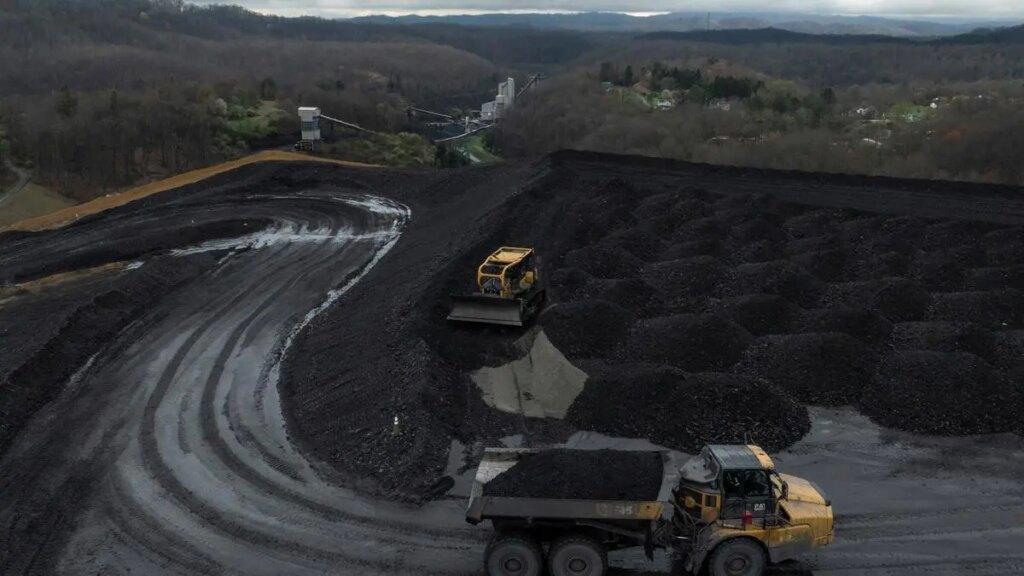
Coal India DVC Power Project: ₹16,500 Crore Investment for Jharkhand Plant
Coal India DVC Power Project: ₹16,500 Crore Investment for Jharkhand Plant
Reading Time: 4 minutes
Coal for the proposed Coal India DVC power project would be sourced from nearby coalfields operated by BCCL and CCL subsidiaries | Photo Credit: ADREES LATIF
Coal India Limited (CIL), the world’s largest coal mining company, has signed a significant agreement to establish the Coal India DVC power project in Jharkhand. The Memorandum of Understanding (MoU) with state-run power utility Damodar Valley Corporation (DVC) was signed on Monday to set up a 1,600 MW ultra-supercritical coal-fired power facility with a substantial investment of approximately ₹16,500 crore.
Table of Contents
- Key Details of the Coal India DVC Power Project
- Brownfield Expansion: Enhancing Existing Capacity
- Joint Venture Structure and Equity Sharing
- MoU Signing Ceremony and Key Officials
- Coal Supply Chain for the Power Plants
- Coal India’s Thermal Power Diversification Strategy
- Future Implications for Energy Sector
Key Details of the Coal India DVC Power Project
The Coal India DVC power project represents a significant expansion of thermal power generation capacity in eastern India. The project will feature two 800 MW power plants utilizing ultra-supercritical technology, which offers higher efficiency and lower emissions compared to conventional coal-fired plants. This 1,600 MW initiative marks a strategic move by Coal India to strengthen its presence in the power generation sector beyond its traditional coal mining operations.
The Coal India DVC power project is expected to inject substantial energy capacity into the regional grid, addressing growing power demands in Jharkhand and neighboring states. The partnership combines Coal India’s fuel resources with DVC’s power generation expertise to create an integrated energy solution.
As part of its disclosure obligations, Coal India announced the development through a stock exchange filing, highlighting the strategic importance of the Coal India DVC power project within its broader business diversification initiatives.
Brownfield Expansion: Enhancing Existing Capacity
The Coal India DVC power project will be established as a brownfield expansion of the existing Chandrapura Thermal Power Station, which currently operates with a capacity of 2 × 250 MW. This approach offers several advantages over greenfield development, including utilization of existing infrastructure, streamlined permissions, and potentially faster implementation timelines.
By expanding at an established site, the Coal India DVC power project can leverage existing transmission infrastructure, water resources, and land assets, creating operational efficiencies while reducing the overall environmental footprint of new development.
Technology Upgrade
The ultra-supercritical technology planned for the Coal India DVC power project represents a significant technological advancement over the existing Chandrapura facilities, offering higher thermal efficiency, reduced coal consumption per unit of electricity generated, and lower emissions of greenhouse gases and other pollutants.
Joint Venture Structure and Equity Sharing
The Coal India DVC power project will be executed through a dedicated joint venture company with equal participation from both partners. According to the announcement, the joint venture will operate on a 50% equity sharing basis between Coal India Limited and Damodar Valley Corporation, ensuring balanced governance and shared investment responsibility.
This equity structure for the Coal India DVC power project aligns with other strategic partnerships in India’s power sector, where state-owned enterprises collaborate to leverage complementary strengths while distributing financial risk. The joint venture arrangement will provide a dedicated entity focused specifically on the development, construction, and operation of the power facilities.
| Project Aspect | Details |
|---|---|
| Total Capacity | 1,600 MW (2 × 800 MW units) |
| Technology | Ultra-supercritical coal-fired |
| Investment | ₹16,500 crore (approximately) |
| Location | Chandrapura, Jharkhand |
| Type | Brownfield expansion |
| JV Structure | 50:50 equity sharing |
| Coal Source | BCCL and CCL mines |
MoU Signing Ceremony and Key Officials
The non-binding memorandum of understanding for the Coal India DVC power project was formally signed on April 21, 2025, in Kolkata, where both organizations maintain their headquarters. The signing ceremony featured the presence of senior leadership from both entities, underscoring the strategic importance of this partnership.
P.M. Prasad, Chairman of Coal India Limited, and S. Suresh Kumar, Chairman of DVC, presided over the ceremony. The actual MoU for the Coal India DVC power project was signed by Debasish Nanda, Director (Business Development) of Coal India, and Swapnendu Kumar Panda, Member (Technical) of DVC, representing their respective organizations.
Regional Development
The Coal India DVC power project aligns with the development goals of Jharkhand state, where both CIL and DVC maintain significant operations. The Damodar Valley Corporation’s command area spans both Jharkhand and West Bengal, with the corporation itself jointly owned by these two states along with the Central government.
Coal Supply Chain for the Power Plants
A key advantage of the Coal India DVC power project is its proximity to fuel sources. According to the announcement, coal for the proposed power plants will be sourced from nearby coalfields operated by Coal India’s subsidiary companies – specifically Bharat Coking Coal Limited (BCCL) and Central Coalfields Limited (CCL).
This strategic coal sourcing arrangement for the Coal India DVC power project creates an efficient supply chain with minimal transportation distances, reducing both logistics costs and the environmental impact of fuel delivery. The integrated approach leverages Coal India’s core mining expertise to support its diversification into power generation.
Coal India’s Thermal Power Diversification Strategy
The Coal India DVC power project represents part of a broader diversification strategy for the mining giant. Coal India is actively expanding beyond its traditional coal extraction operations into thermal power generation, creating more vertically integrated energy solutions.
In parallel with the Coal India DVC power project, the company is pursuing other power initiatives. Notably, Mahanadi Basin Power (MBPL), a special purpose vehicle and wholly-owned subsidiary of Mahanadi Coalfields Limited (MCL), is planning to implement a proposed 2 × 800 MW thermal power station as a greenfield project in Odisha. MCL itself is a subsidiary of Coal India.
Additionally, Coal India had previously signed an MoU with Rajasthan Rajya Vidyut Utpadan Nigam (RRVUNL) for exploration and execution of power projects. The proposed electricity generation under that agreement would be through a diverse mix of coal-fired thermal power plants, solar projects, pump storage plants, and wind projects.
Strategic Positioning
The Coal India DVC power project, along with other power ventures, positions CIL strategically within India’s evolving energy landscape. As the world’s largest coal miner seeks to future-proof its business model, these projects provide pathways to higher-value energy products while leveraging the company’s core fuel resources.
Future Implications for Energy Sector
The Coal India DVC power project has several important implications for India’s energy sector. First, it demonstrates continued investment in advanced coal technologies despite global shifts toward renewable energy, indicating that coal will remain a significant component of India’s energy mix in the medium term.
Second, the ultra-supercritical technology chosen for the Coal India DVC power project reflects an emphasis on efficiency and reduced environmental impact within conventional thermal generation. This approach aligns with India’s dual goals of expanding energy access while improving environmental performance.
As the Coal India DVC power project progresses from planning to implementation, it will be a significant development to watch in India’s evolving power sector. The project represents a major capital investment in eastern India’s energy infrastructure while showcasing how state-owned enterprises are collaborating to address the nation’s growing energy needs.
Published on April 21, 2025






